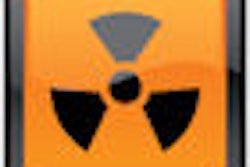RESTON, VA - Despite the robust research, the endless task force meetings, the cluster of congressional well-wishers, and the blessings of key advocacy groups and private insurers, the U.S. Centers for Medicare and Medicaid Services (CMS) dealt virtual colonoscopy a serious blow last spring by rejecting government reimbursement for the radiology-based colon screening exam.
CMS' May 12 national coverage decision denial means that absent a second time- and money-sucking effort very much like the last one, advocates of virtual colonoscopy (also known as CT colonography or CTC) have little hope that Medicare will pay for screening CTC anytime soon. Some believe key decision makers were against coverage from the start. Others see the rejection more like a small bump on a long road.
Opening this week's International Symposium on Virtual Colonoscopy, course director Dr. Matthew Barish, assistant professor of radiology at Stony Brook University Medical Center in Stony Brook, NY, and others assessed the development of VC over the past decade, finding fault with radiologists, gastroenterologists, and the government, while looking at what went right for VC as well.
What screening is about
Radiologists advocate for VC screening to reduce morbidity and mortality from colorectal cancer through CTC, Barish said, but the real goal is to reduce colorectal cancer deaths through any screening method and, ultimately, to "reduce mortality and morbidity from any cause," he said in Monday's opening session.
Throughout a decade of VC symposia dedicated to research and development of VC, validation and acceptance, and implementation and training, the evidence shows that CTC has met the main criteria: It works, and it's safe.
Radiologists aren't alone in defining CTC's place, he said. CTC has many stakeholders, including gastroenterologists, the government, and industry interests. At times during the past decade, "we all forgot the patient," Barish said.
Radiology squabbles
Radiologists argued over the name of their technique. Is it CTC or virtual colonoscopy or something else? Maybe the correct scientific term is CTC, but "I've yet to have a patient ask for CT colonography," Barish said. VC is a name they can understand, and that's important to the ultimate success of the technique, he said.
Next, radiologists spent years and too many research dollars engaged in what turned out to be counterproductive arguing over primary 2D versus 3D interpretation, "instead of really saying it's 2D and 3D," Barish said. "I think it really confused our gastroenterology colleagues and government agencies, who said, 'You know, they really don't have this thing figured out yet.' "
Then radiologists rejected their own science, picking apart the landmark trial published in the New England Journal of Medicine by Pickhardt and colleagues (December 4, 2003, Vol. 349:23, pp. 2191-2200) to argue that the group's 3D primary interpretation technique wasn't really reproducible using other VC methods. "My response should have been: 'It works, let's repeat it,' " Barish said.
Since then, other vendors have adopted viewing platforms very similar to the Viatronix (Stony Brook, NY) software used in the trial, Barish said.
More than once in the past decade, studies have been performed in which "patient cohorts were assumed to be some sort of super-compliant robotic group that allowed themselves to be insufflated beyond human capacity or super-cleansed," he said. The focus should have remained on the patients, their comfort, and their willingness to be screened for colorectal cancer, Barish said.
Radiologists argued over the need for fecal and fluid tagging, waiting for head-to-head comparisons with and without tagging, "even after multiple studies showed its effectiveness," Barish said. Some maintain today that tagging isn't strictly necessary, and some may argue that either barium or iodine makes for a better tagging agent than the other, but these details should be considered too minor to fight over, he said.
After all, technology advances constantly in colonoscopy, too, but "you don't see colonoscopists arguing over video versus optical colonoscopy, and you don't see them repeating all their studies just because the technology has advanced," Barish said.
Adding insult to injury, CTC allowed itself to be hijacked by the whole-body screening phenomenon, a practice shunned by most thought leaders in healthcare, Barish said.
"This dramatically confused patients, insurers, and industry; it was a real setback for us, and we're still hurt by this association today," he said. "This was not good for patients. It really took coronary CT angiography and CT colonography off in a direction we shouldn't have allowed them to go."
Radiology failed to recognize the key value of CTC: It's a vast improvement over double-contrast barium enema (DCBE) in terms of higher sensitivity and lower radiation dose.
"That's where our efforts should be focused -- on VC as a replacement for DCBE and not competing with optical colonoscopy," he said.
Gastroenterology's double standards
It wasn't all radiology's fault, Barish said. Turf wars got the better of both radiology and gastroenterology, who must share the blame for a battle that has been as unnecessary as it's been counterproductive, he said.
By questioning whether patients would be better served with CTC or colonoscopy, gastroenterology forgot that patients are still getting inferior exams such as flexible sigmoidoscopy and DCBE, he said.
"The patient doesn't care who does the test; whether they're screened with optical or CTC, they need to be screened," Barish said. "Gastroenterology's first response was to attack [CTC] technology; our response was to attack optical colonoscopy. That probably wasn't a good strategy."
Before CTC arrived on the scene, the definition of a clinically significant polyp was 1 cm, Barish said. "After the introduction of CTC, we saw that bar get lower and lower: 10 mm, 7, 6, 5 -- and now [to gastroenterology], every polyp matters," he said. "The size chosen really needs to be based on scientific evidence -- not politics, and not the choice of exam."
Too much time is spent discussing theoretical risks, such as the remote risk of malignancy in a low-dose CT exam (approximately one in 20,000 patients) that is even lower in older patients likely to be screened, as opposed to the real risk of perforation at colonoscopy (approximately one in 1,000).
After gastroenterology attacked VC, it tried to own and practice the technology in its own ranks, Barish said. Gastroenterology came out with the rather schizophrenic view that VC was safe and effective -- yet also somehow unproven and ineffective.
Gastroenterology then lobbied against CTC reimbursement, while offering CTC training courses to its members, he said. And it argued against establishing current procedural terminology (CPT) codes for virtual colonoscopy, while arguing for establishing a split CPT code that would allow VC's search for extracolonic findings to be performed by radiologists.
The government's toll
Meanwhile, the U.S. Preventive Services Task Force (USPSTF) focused on CTC in comparison to and as a replacement for colonoscopy, elevated the risk of radiation beyond what the data show, and "only saw the negatives of extracolonic findings," Barish said.
But it was CMS that did the most harm, he said, citing in its May 12, 2009, denial the need for separate research data covering an older Medicare population "as if it were going to be dramatically different" from data covering the general over-50 screening population, Barish said.
The agency ignored the data on older patients (showing roughly equivalent benefits compared with the general screening population) that was provided to it.
CMS then turned around and "used the radiation risk for the general population, which doesn't make any sense because the radiation risk in the older population is essentially zero," Barish said.
And like USPSTF, CMS took to heart all the potential risks and costs of extracolonic findings while ignoring the benefits.
"Worst of all, CMS compared CTC to optical colonoscopy but left two clearly inferior older tests, DCBE and flexible sigmoidoscopy, as covered services," he said. At least some kind of logic could have been gleaned from a decision to scrap those inferior tests along with VC, he said.
"If we put patients' interests first, optical colonoscopy and CT colonography are complementary technologies, and they need to be embraced and supported by both sides for the benefit of patients," Barish said. "Hopefully we can work together to bring colorectal cancer screening to the majority of patients."
Comments
Radiologist Dr. Mark Klein from Washington Radiology Assoc. in Washington, DC, said there are plenty of good reasons to compare optical colonoscopy with CTC, starting with the fact that colonoscopy misses as many as 6% of cancers, even in expert hands.
Gastroenterologist Dr. Don Rockey from University of Texas Southwestern Medical Center in Dallas countered that missed cancers at colonoscopy are largely attributable to inexperienced practitioners -- or from colonoscopists who thought they had reached the cecum but had not. As for designs on radiology's niche, Rockey said there currently were very few gastroenterologists looking to practice VC.
"Let's remember what we have," said Dr. Elizabeth McFarland, a radiologist at the Center for Diagnostic Imaging in St. Louis, and a member of the American College of Radiology's task force on CTC.
Importantly, in 2008 the American Cancer Society (ACS) added CTC to its list of approved colon screening exams with support from both gastroenterology and radiology, she said.
Private payors from Cigna to United Healthcare and some states' Blue Cross/Blue Shield insurers have begun to reimburse screening coverage, and 14 states plus the District of Columbia now mandate VC screening coverage because it is included in the ACS's list of screening exams. The Blue Cross/Blue Shield Technology Evaluation Center ruled that CTC for screening does meet its criteria for a screening exam.
"After two years of work, we finally did pass three level I CPT codes for CTC screening and diagnostic, as well as new practice guidelines coming out in November," McFarland said. Finally, new data on diminutive polyps are showing far lower rates of invasive cancers (0.1%) compared to previous data (0.9%), a finding that bodes well for VC's practice of ignoring diminutive lesions ≤ 5 mm in diameter and sometimes offering surveillance as an option for 6- to 9-mm lesions.
"Yes, the CMS decision had an impact, but keep it in perspective with all the good things," McFarland said.
By Eric Barnes
AuntMinnie.com staff writer
October 28, 2009
Related Reading
JACR editorial: Medicare used double standard in VC decision, September 22, 2009
NEJM editorial lauds CMS rejection of VC, May 28, 2009
CMS rejects Medicare coverage for virtual colonoscopy, May 12, 2009
VC/AAA screening combo cost-effective in older adults, March 26, 2009
American Cancer Society recognizes virtual colonoscopy screening benefit, March 5, 2008
Copyright © 2009 AuntMinnie.com



















